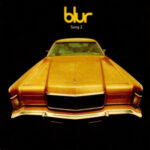The Velvet Underground, often hailed as one of the most influential bands in the history of rock music, emerged from the vibrant artistic and cultural scene of New York City in the mid-1960s. Formed in 1964, this avant-garde rock band, led by Lou Reed and John Cale, challenged the conventions of popular music and pushed the boundaries of lyrical content. Over the course of their brief but impactful career, The Velvet Underground created a unique sonic landscape that resonates to this day, inspiring countless musicians and artists across genres. Let’s explores the band’s origins, evolution, key members, music, and lasting impact on the world of music and art.
The Velvet Underground’s story begins in New York City, where Lou Reed, born Lewis Allan Reed in Brooklyn on March 2, 1942, and John Cale, a Welsh musician, met in 1964. Reed, a songwriter and guitarist, was initially part of various R&B and doo-wop groups before attending Syracuse University. Cale, on the other hand, had a background in classical music and avant-garde composition. Their paths converged when they crossed one another at a serendipitous moment in the city’s burgeoning artistic scene.
Reed and Cale were soon joined by Sterling Morrison, a guitarist and childhood friend of Reed, and Maureen “Moe” Tucker, a drummer who had a distinctive and primitive style of playing. This quartet formed the core of The Velvet Underground, and their collective musical influences and diverse backgrounds would become the foundation for the band’s distinctive sound.
The Velvet Underground’s first gig took place at a high school in Summit, New Jersey, in 1965. Their early performances were marked by raw, confrontational music and lyrics that delved into taboo subjects such as drug addiction, sexuality, and urban decay. This unflinching approach to songwriting and performance would set them apart from the mainstream rock scene.
In 1965, the band began a residency at the Café Bizarre in Greenwich Village, a club that allowed them the artistic freedom to explore their experimental tendencies. It was during this time that they caught the attention of Andy Warhol, the renowned pop artist and avant-garde impresario. Warhol, impressed by their music and captivated by their subversive lyrics, became their manager and producer.
Under Warhol’s guidance, The Velvet Underground recorded their debut album, “The Velvet Underground & Nico,” in 1966. This album would prove to be a landmark in the history of rock music. Its iconic banana cover designed by Warhol himself became instantly recognizable. The album’s sonic palette was a mix of rock, pop, and experimental elements, with Reed’s distinctive deadpan vocals and Cale’s innovative use of the electric viola.
The album included tracks like “Sunday Morning,” “Venus in Furs,” and “Heroin,” which challenged listeners with their stark lyrics and unconventional arrangements. While it didn’t achieve commercial success upon release, “The Velvet Underground & Nico” garnered critical acclaim and later achieved cult status. Its impact on future generations of musicians cannot be overstated, with artists like David Bowie, Iggy Pop, and countless others citing it as a major influence.
Despite the critical acclaim surrounding their debut album, tensions within the band were mounting. John Cale’s experimental tendencies clashed with Reed’s desire for a more straightforward sound. In 1968, Cale left the band, leading to a significant shift in their music. Doug Yule, a multi-instrumentalist, joined as Cale’s replacement, bringing a more melodic and accessible dimension to the band’s sound.
Under this new lineup, The Velvet Underground released “White Light/White Heat” in 1968. The album was a departure from their debut, featuring a raw, abrasive, and at times, cacophonous sound. Tracks like “Sister Ray” and the title track “White Light/White Heat” demonstrated the band’s willingness to push the boundaries of rock music even further.
In 1969, the band released a self-titled album, “The Velvet Underground,” commonly referred to as the “third album.” This album marked yet another change in direction, with a more polished and melodic approach. Songs like “Pale Blue Eyes” and “Candy Says” showcased Lou Reed’s growing prowess as a songwriter and storyteller. Despite its critical acclaim, the album didn’t achieve commercial success during its initial release, partly due to limited promotion.
By 1970, The Velvet Underground found themselves at a crossroads. Reed, disillusioned with the band’s lack of commercial success, decided to leave and pursue a solo career. This departure marked the end of the band’s original incarnation. Doug Yule took on a larger role in the band, and they released “Loaded” in 1970, an album that hinted at the more mainstream direction Reed would explore in his solo work.
The Velvet Underground may not have achieved commercial success during their time together, but their influence on music and culture cannot be overstated. Over the years, their music has gained recognition, and their albums are now celebrated as classics.
Lou Reed’s solo career, which began in earnest in the early ’70s, saw him achieve both critical acclaim and commercial success with albums like “Transformer,” featuring the hit “Walk on the Wild Side.” Reed’s solo work continued to explore themes of urban life, addiction, and the human condition.
John Cale also had a successful solo career, collaborating with artists from various genres and experimenting with diverse musical styles. His work as a producer and arranger extended his influence across the music landscape.
The Velvet Underground’s music has been covered and referenced by countless artists across genres, from punk to alternative rock and beyond. Their fearless exploration of taboo subjects and willingness to defy musical conventions paved the way for a wide range of musicians to push boundaries in their own work.
In 1990, The Velvet Underground reunited for a European tour, marking the first time the original lineup had performed together in over two decades. The tour received widespread acclaim and renewed interest in the band’s music.
Tragically, Sterling Morrison passed away in 1995, but his contributions to The Velvet Underground’s sound and legacy live on. Moe Tucker, known for her distinctive drumming style, also continued to make music and tour as a solo artist.
In 1996, The Velvet Underground was inducted into the Rock and Roll Hall of Fame, a well-deserved recognition of their enduring impact on music.
The Velvet Underground’s journey from the underground art scene of New York City to becoming icons of rock and roll exemplifies the power of artistic innovation and fearless self-expression. While their commercial success was limited during their time together, their enduring influence on music and culture is immeasurable.
Their music, with its exploration of taboo topics and subversion of musical norms, continues to inspire generations of artists to challenge conventions and forge their own creative paths. The Velvet Underground’s legacy is a reminder that the true measure of an artist’s impact often extends beyond record sales and chart success. It’s about pushing boundaries, questioning the status quo, and fearlessly expressing the human experience.
Today, The Velvet Underground’s music is celebrated as a cornerstone of alternative and indie rock, with their albums, particularly “The Velvet Underground & Nico,” being hailed as essential listening for anyone interested in the evolution of modern music. Tracks like “Heroin” and “Venus in Furs” still possess a raw, visceral power that resonates with listeners, while the more melodic and introspective compositions like “Pale Blue Eyes” and “Candy Says” continue to captivate audiences with their emotional depth.
In the decades following their initial disbandment, The Velvet Underground’s music has been reissued, remastered, and revisited, ensuring that their groundbreaking sound remains accessible to new generations of listeners. Their influence is not confined to music alone; it extends to art, fashion, and even literature, where their fearless approach to storytelling and their exploration of taboo subjects have left an indelible mark.
As the years have passed, The Velvet Underground’s surviving members, Lou Reed (died 2013), John Cale, Moe Tucker, and Doug Yule, have continued to contribute to the world of music and art, both as solo artists and collaborators. They have embraced their status as pioneers, often participating in documentaries, interviews, and retrospectives that shed light on the band’s history and their impact on the cultural landscape.
The Velvet Underground’s journey was one of artistic rebellion, exploration, and innovation. Their music, which defied convention and challenged societal norms, continues to resonate with those who seek to break free from the constraints of the ordinary. The band’s ability to merge diverse musical backgrounds into a unique sonic landscape is a testament to the power of collaboration and the magic that can happen when visionary artists come together.
Their story is a reminder that sometimes it takes time for true artistic genius to be recognized and appreciated fully. The Velvet Underground’s impact on music and culture has only grown stronger with time, and their legacy as pioneers of subversive sound is firmly secured in the annals of rock history. As long as there are artists who dare to defy conventions and explore the uncharted territories of creativity, The Velvet Underground’s influence will continue to reverberate through the fabric of contemporary music and art. Their journey serves as an enduring source of inspiration for all those who seek to break free and forge their own path in the world of art and music.
The influence of the Velvet Underground is seem in many of the popular artists of today. Many artists will cover Velvet Underground Songs.
A Few Examples
Miley Cyrus Covering “Sweet Jane”
In 1998, for their Halloween show, Phish covered the entire “Loaded” album during their show in Las Vegas as part of their annual Halloween “Musical Costume”
Phish playing “Who Loves The Sun” 10/31/98
This post has already been read 214 times!












